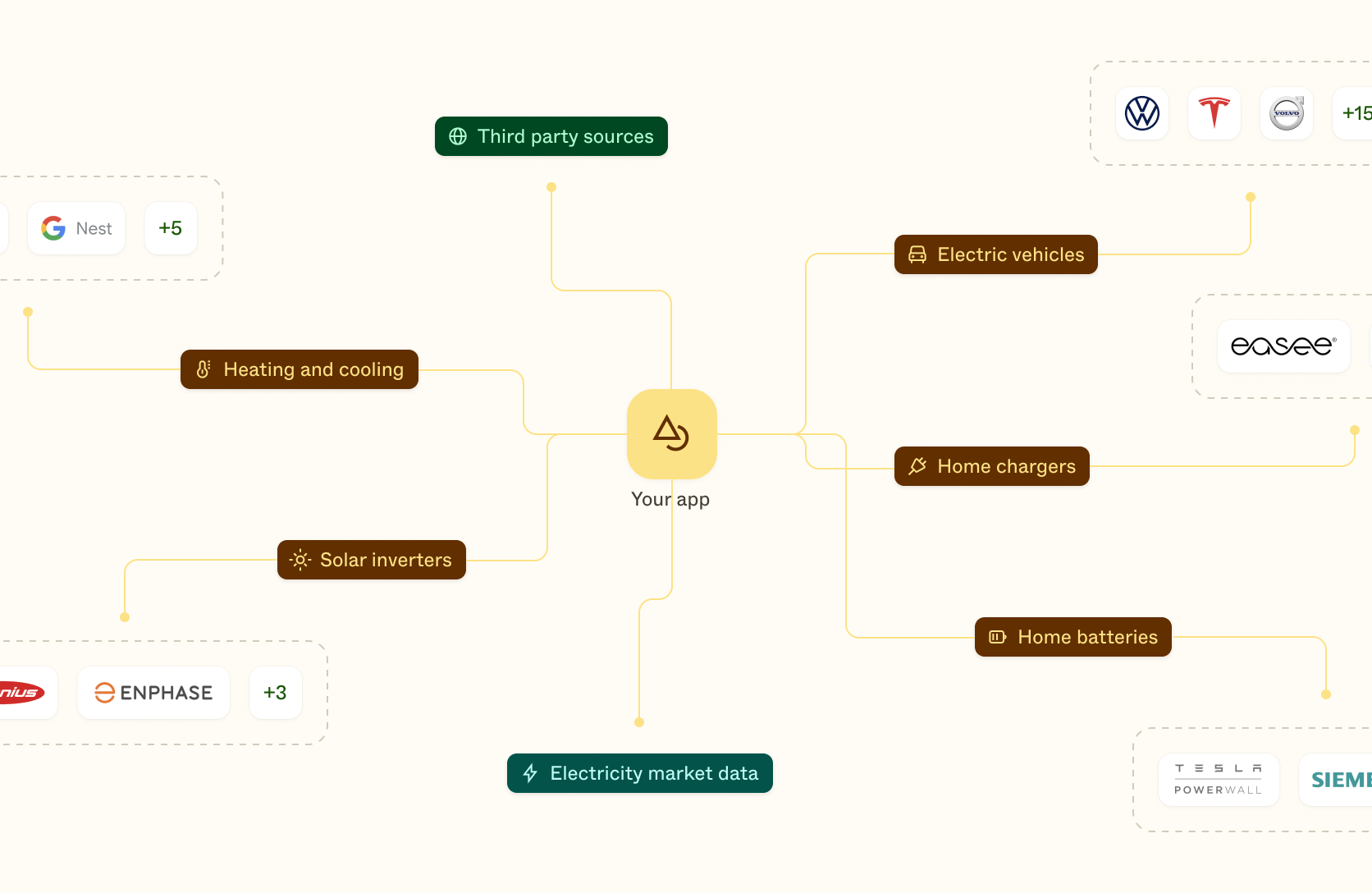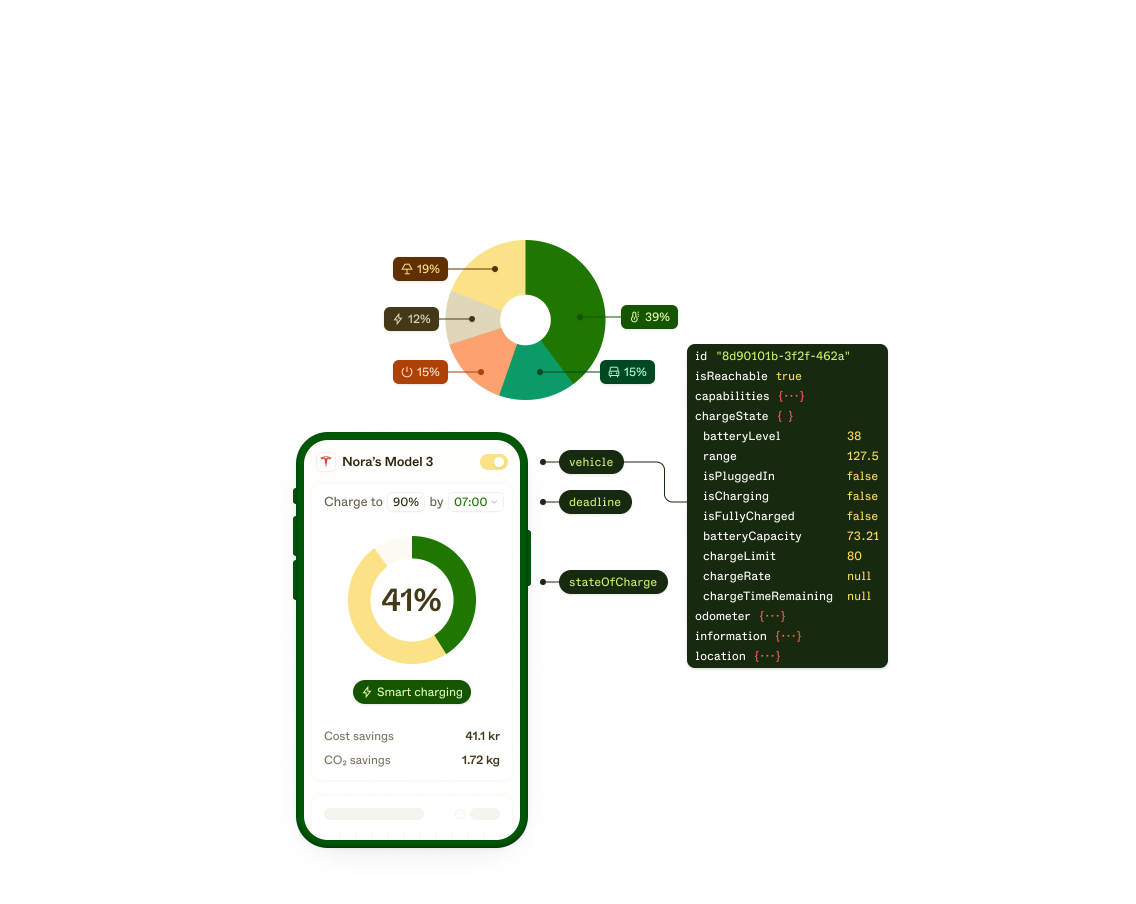3 ways to monetize demand-side flexibility

You might not know it, but there’s a delicate balancing act happening behind the scenes every time your heating clicks on, or you plug in your EV to charge.
Balancing supply and demand is critical for our energy system. If there’s more demand than supply, the risk of outages increases. If there’s more supply than demand, it generates waste. To create a more efficient, clean and sustainable energy system, we need to build in flexibility. Flexibility means we’re better able to manage that balancing act – something that’s getting ever-more challenging as volatility in the energy system grows.
The need for demand-side flexibility
There are a few important factors causing that volatility. The first is the introduction of more renewable energy sources into our energy system. Renewable sources like wind and solar are better for the planet, but they’re not as flexible as fossil fuel generators. They only produce energy intermittently when the wind is blowing or the sun is shining, and that supply can’t be scaled-up on-demand. We can burn more fossil fuels to meet peaks in consumption, but we can’t make the wind blow or the sun shine.
The second factor is that at the same time, demand for electricity is surging and putting more strain on the grid. Entire industries are transitioning to renewable energy, and consumers are switching to Electric Vehicles (EVs), solar inverters, home batteries and heat pumps in droves. There’s more load on the grid than it can handle: it wasn’t built with these sudden increases in mind, and needs flexibility to manage them.
And third, unstable geo-political situations are affecting energy prices globally. Both energy retailers and their customers are feeling the pressure to respond to fluctuations in market prices, and cut energy costs.
Demand-side flexibility solves these problems. Flexibility gives us the ability to adjust electricity consumption dynamically, based on factors like grid conditions and market prices. It means we’re better able to manage the intermittency of renewable energy, and that in turn means we can integrate more of it into the grid. With demand-side flexibility, we can shift loads around availability, reduce stress on the grid at peak times, and cut the cost of consumption.
Small-scale flexibility solutions
So far, we’ve managed to unlock flexibility on a small scale, by leveraging smart Distributed Energy Resources (DERs). These DERs (like EVs, solar inverters, home batteries and heat pumps) come equipped with small computers, which means we can communicate with them and programmatically control their load.
EV smart charging is one example. EVs are typically plugged in at home for a lot longer than it takes them to charge. Most people plug them in when they get home, and don’t need them again until the next morning. That means their load is flexible. They don’t need to start charging right away – instead, they can look for the lowest energy price hours, and automatically stop and start charging to align with them.
Smart charging and other demand-side energy management programs incentivise individuals to optimize their consumption patterns. But it’s only the first step. Scaling that flexibility enables us to do even more to balance the grid, and to have a greater impact. Aggregating DERs to unlock their combined flexibility potential makes an even bigger difference, and has the potential to transform our entire energy ecosystem.
Virtual Power Plants (VPPs)
There are lots of problems in the energy system that can be solved by shifting end-user consumption. Leveraging large volumes of flexible load enables us to smooth out the intermittencies caused by renewable energy, and trade demand in flexibility markets. Historically, only power providers and huge facilities (like factories) could do this, as there’s a minimum load required to participate. Now, that’s changing. By aggregating residential properties and DERs into Virtual Power Plants (VPPs) we can create enough cumulative load for them to participate, too.
Aggregation is required for two reasons. The first is that most use cases require bigger volumes of flexible load to participate than individual households or DERs can provide. The second is that VPPs enable multiple households and devices to behave not only en masse, but as a single unit. It’s much more practical to leverage their cumulative flexible potential as one load, than to attempt to orchestrate them all individually.
Once aggregated, there are lots of ways to monetize demand-side flexibility. Here are a few where we see the most potential:
1. Wholesale trading
Who is it for? Energy retailers
How does it work?
- Self-balancing: Energy retailers have a responsibility to ensure supply and demand stay in balance. They are required to forecast how much energy they will produce and consume per day, and are fined if they miscalculate. That’s because if their estimates are off, the grid operator will have to pay someone else to increase or decrease their consumption, and balance things back out. But consumption is near-impossible for retailers to accurately predict. Flexibility enables retailers to shift usage around so they can self-balance their portfolio, and minimize imbalance settlement penalties.
- Intraday/ day-ahead markets: Energy retailers buy their energy ahead of time, based on estimated consumption. Flexibility enables retailers to optimize trading by shifting flexible loads around to hours with cheaper energy prices. If their end-users are on fixed-price contracts, they can pocket the difference
2. Ancillary services markets
Who is it for? Transmission System Operators (TSOs)
How does it work?
- Frequency reserves: The transmission system needs to be kept in balance at a certain frequency. But the system is sensitive, and the frequency can change quickly if energy in (supply) is not equal to energy out (demand). Flexibility enables TSOs to respond to frequency imbalances within different time horizons, and turn up or down consumption to keep it in balance.
- Load reduction programs: TSOs can encourage end-users to participate in programs where they are remunerated for shifting demand in times of system stress, eg. during the coldest winter days, and split savings with them.
3. Local network flex
Who is it for? Distribution System Operators (DSOs)
How does it work?
- Dynamic capacity allocation: DSOs can avoid costly infrastructure build-outs by enabling end-users to shift demand in times of congestion, eg. by dynamically reducing their maximum capacity.
Unlocking the flexibility opportunity
Scaling demand-side flexibility represents an enormous opportunity for stakeholders across the energy ecosystem. The first step – and potentially the biggest scale – will come from consumer-driven response to price signals. The next step will be unlocking utility-driven response to grid conditions. This means giving energy companies the ability to aggregate and actively control household energy devices, so they can automatically trigger devices when they need them to act.
Aggregating and automating DERs in this way is a complex challenge. First, stakeholders across the ecosystem need the ability to monitor the assets in their network to understand and forecast their load and flexibility. Then, they need to be able to pool and remotely activate those assets, while respecting constraints and minimizing disruption to the end user.
Solutions like Enode’s APIs help unlock this capability, and add value across the entire energy system. It’s predicted that by 2025, demand-side flexibility could cut €U32 billion in gas costs across the EU, and save 37.5 million tonnes of annual greenhouse gas emissions.
To learn more about how to leverage demand-side flexibility, get in touch.
